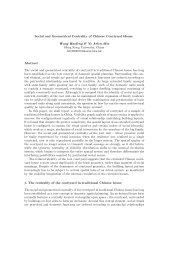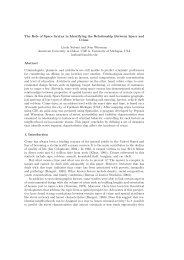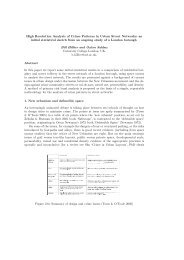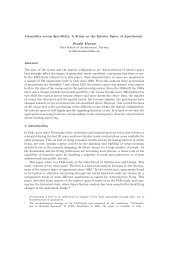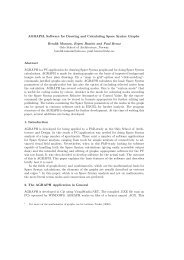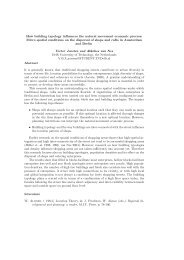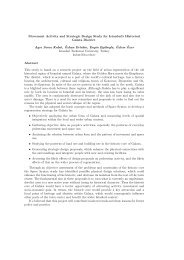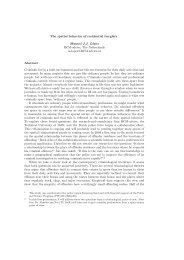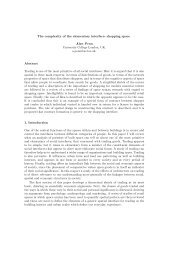Seen in a different light. Icons in Byzantine museums and churches ...
Seen in a different light. Icons in Byzantine museums and churches ...
Seen in a different light. Icons in Byzantine museums and churches ...
Create successful ePaper yourself
Turn your PDF publications into a flip-book with our unique Google optimized e-Paper software.
262 G. Stavroulaki <strong>and</strong> J. Peponis<br />
Figure 111: Icon- exposure <strong>and</strong> icon-capture polygons <strong>in</strong> the museum: a. icon-exposure<br />
polygon from icon 1; b. icon-capture polygon to icon 1; c. icon-exposure polygon from<br />
icon 2; d. icon-capture polygon to icon 2<br />
There is an even more important difference which becomes clearer when we consider<br />
the polygons of exposure <strong>and</strong> capture that correspond to two icons (figure 111). The<br />
arrangement of icons is such that any two icons which are co-visible are fac<strong>in</strong>g the same<br />
way. The closer one approaches an icon, the greater the likelihood that other icons near<br />
the 60 degree cone of vision will appear deeper <strong>in</strong>to the layered space, as if <strong>in</strong>vit<strong>in</strong>g the<br />
visitor to move forward. The more one steps back from an icon, while still rema<strong>in</strong><strong>in</strong>g <strong>in</strong> its<br />
vic<strong>in</strong>ity, the greater the chances that it can be compared to adjacent co-planar icons. Thus,<br />
the entire arrangement works to <strong>in</strong>vite comparisons as well as the careful exam<strong>in</strong>ation of<br />
<strong>in</strong>dividual icons; movement is encouraged not only <strong>in</strong> the <strong>in</strong>terests of exhaustive view<strong>in</strong>g<br />
of the collection but also <strong>in</strong> the <strong>in</strong>terests of comparative view<strong>in</strong>g. <strong>Icons</strong> are alternatively<br />
seen <strong>in</strong> patterns of simultaneity <strong>and</strong> as s<strong>in</strong>gle objects. However, as the comparative field<br />
is cultivated by the curators <strong>and</strong> designers, so the possibilities of relative prom<strong>in</strong>ence <strong>and</strong><br />
relative attenuation are elim<strong>in</strong>ated. In simple language, the mode of see<strong>in</strong>g has to do more<br />
with the exam<strong>in</strong>ation of displays <strong>and</strong> less with position<strong>in</strong>g the subject. This is consistent<br />
with the shift <strong>in</strong> the underly<strong>in</strong>g cultural program: icons are now be<strong>in</strong>g presented primarily<br />
as works of art. Their nature as objects of devotion is relegated to the <strong>in</strong>terpretative<br />
context of explanation; it is no longer presented <strong>in</strong> the arrangement of approaches <strong>and</strong><br />
views.


